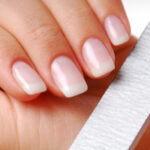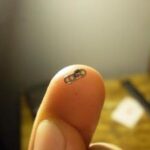Ringworm is the common name used for the fungal infection tinea. Tinea or ringworm can occur anywhere there is a dermal layer. The fungus occurs in the outer layer of keratin which forms in skin and nails. It is further named by which area of the body it occurs on. For instance tinea occurring on the scalp would be called tinea capitis while ringworm on the body would be called tinea corporis. The word tinea itself means worm and the rash was named this due to its appearance on the skin which seemed similar to a coiled round worm.
Symptoms of tinea or ringworm depend to some degree on where the infection occurs. Symptoms can include the characteristic round patchy rash, itching, scaling of the skin, lose of hair when tinea occurs on the scalp, thickening and yellowing of the toe nails when ringworm occurs on the nails, and thickening and scaling of the skin of the heels or soles of feet. Ringworm is attracted to warm moist areas such as skin folds and may flourish is areas of the body such as the groin.
Ringworm can be passed from person to person by skin contact, sharing of linens such as towels, sharing a razor or comb and from walking barefoot in public shower areas of gyms. It can also be passed from pets such as cats or dogs which may carry the fungus but not suffer from the effects of it and may be present in the soil and contracted in this way. Tinea corporis or ringworm on the body and not in the folds seems to occur more often in children than adults which would lead one to wonder if we develop some degree of immunity as we age. However, jock itch seems to be no respecter of age.
Allopathic treatment of tinea generally involves topical treatment with creams such as Lamisil or Nizoral and possible oral medications such as Grifluvin or Diflucan. It may take a prolong time using these medications to get rid of the fungus which can be quite stubborn.
Holistic methods of treating the fungus include twice to three times daily application of a mixture of tea tree, lavender, and eucalyptus essential oils to the area affected. On adults the essential oils can be applied neat or directly onto the skin. With children the essential oils should be diluted in witch hazel five drops each to one ounce of witch hazel and then applied. Essential oils should not be used on small infants without supervision from a holistic practitioner. In addition, a lotion can be made using almond oil and melted bees wax to which is added ten drops each, per ounce of carrier oil, of tea tree, lavender and eucalyptus essential oils. Melt the bees wax using a double boiler and don’t add the essential oils until the wax is melted and heating complete. This lotion can be used as an all over lotion and can be very helpful in preventing the reoccurrence or spread of the fungus.
When using holistic home remedies it is important to remember not to re-dip a Q-tip or hand which has already touched the skin or body into any bottle or preparation. Essential oils preparations should be mixed in glass not plastic containers and protected from light and heat. It is also important to use 100% essential oils and not a substitute. Organic essential oils are best. Using stringent hand washing, cleaning linens in hot water, and personal cleanliness are all important parts of getting rid of this tenacious fungus. It will take two to six weeks of continual treatment to holistically get rid of ringworm. Err on the side of treating overlong.
This article is meant to be informational and is not medical advice. Always talk with your doctor regarding any health concerns.
Sources:
http://www.nlm.nih.gov/medlineplus/ency/article/001439.htm
http://en.wikipedia.org/wiki/Ringworm
http://www.home-remedies-for-you.com/remedy/Ringworm.html







